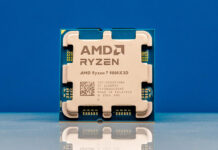This week, along with the AMD Radeon RX 9070 and 9070 XT announcement AMD also shared more about the underlying RDNA 4 architecture. Since we expect the architecture to be used in more products than just the Radeon RX 9070 XT and Radeon RX 9070, we wanted to pull those slides out. AMD has fairly good slides here to read through if you are interested in the architecture so we figured we would post them for weekend reading..
AMD RDNA 4 Architecture Update
This is the big overview slide with the key features of the AMD RDNA 4 architecture. Using the RX 9070 XT.
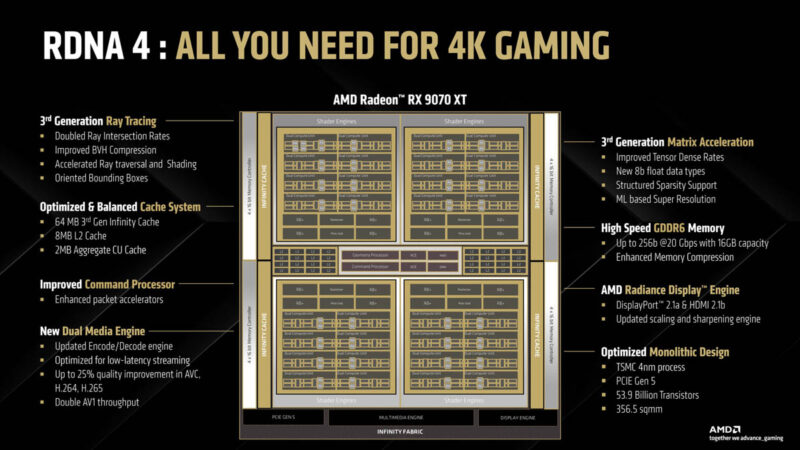
Something that one might not immediately think about when a new GPU is announced is the media engine. These days, the media offloads get used in so many applciations that they are an important part of a new architecture.
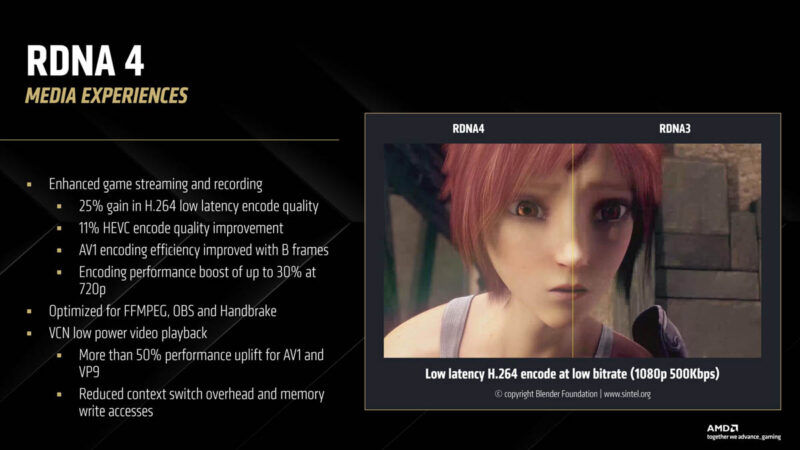
This is the RDNA 4 compute engine with the dual SIMD32 vector units, better matrix operations, and so forth.
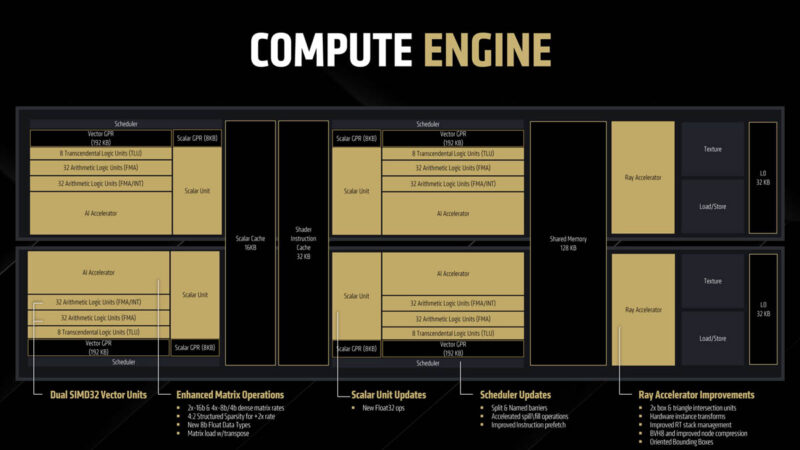
The ray tracing side is interesting because that has become a big part of games.
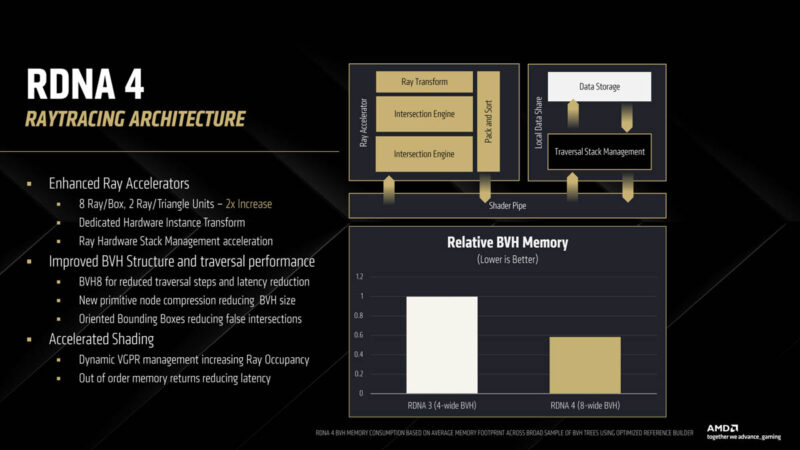
On the bounding boxes side, AMD has new oriented bounding boxes feature that helps improve performance.
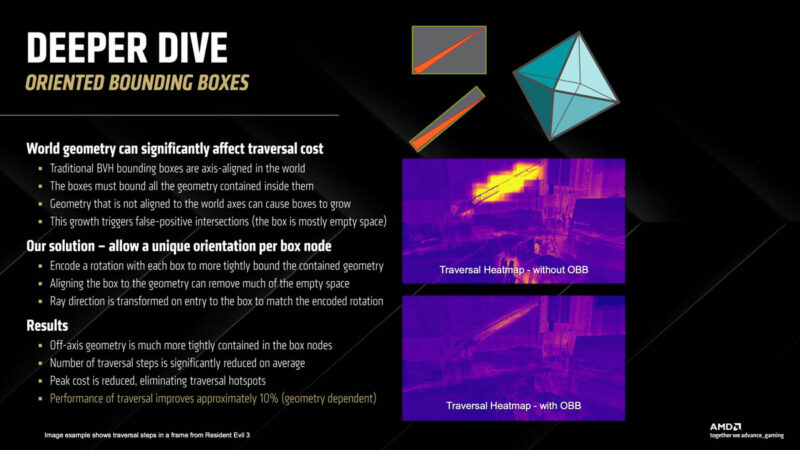
On the out-of-order memory side, RDNA 4 allows memory requests from different shaders to be handled out-of-order. With RDNA 3 these returns were ordered.
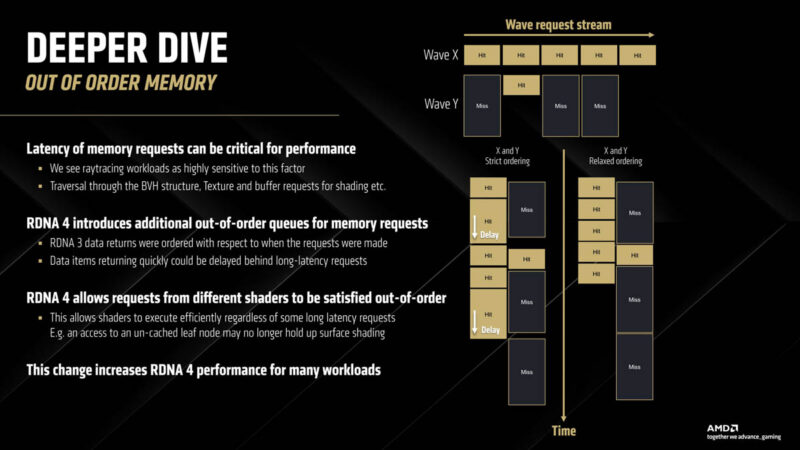
AMD claims its new compute units offer around twice the ray traversal performance.
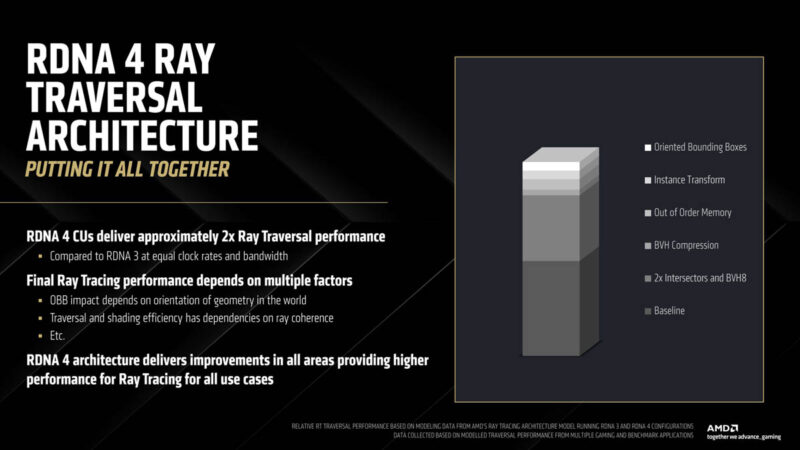
RDNA 4 shaders can allocate registers dynamically while RDNA 3 allocated for the worst case.

AMD focused on its gaming performance, but of course, a big feature these days is AI performance. AMD is pushing an updated AI engine in RDNA 4 to offer big performance gains.
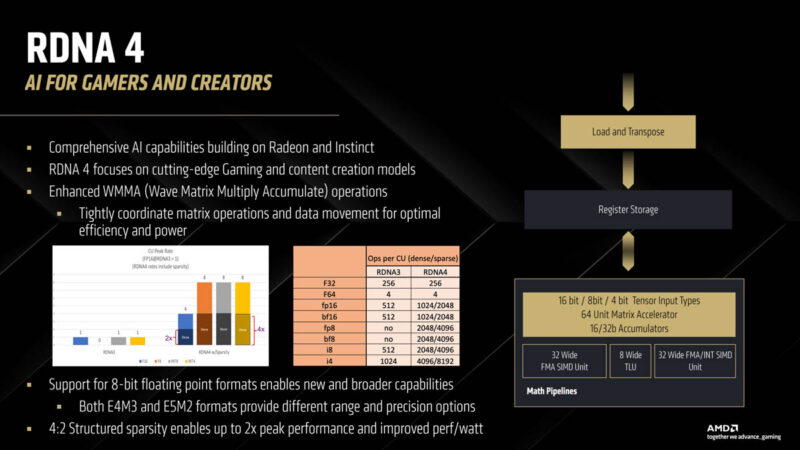
On a per-CU basis, AMD cays it can get around 2x the FP16 performance.
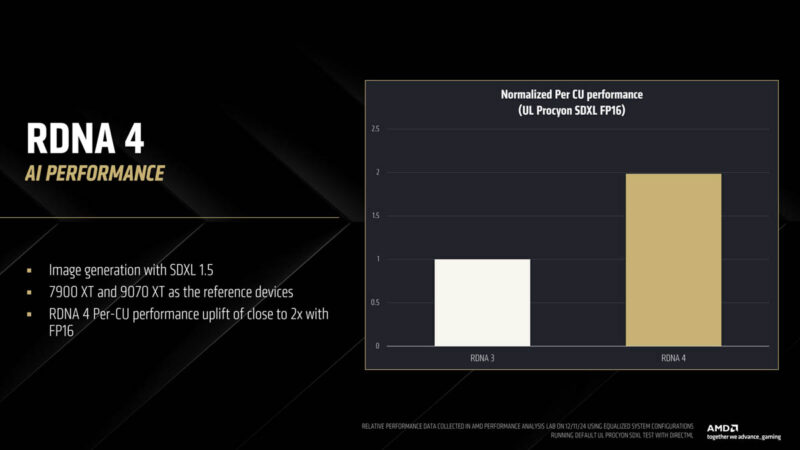
AMD FidelityFX Super Resolution 4 or FSR 4 is the upscaling solution for games.
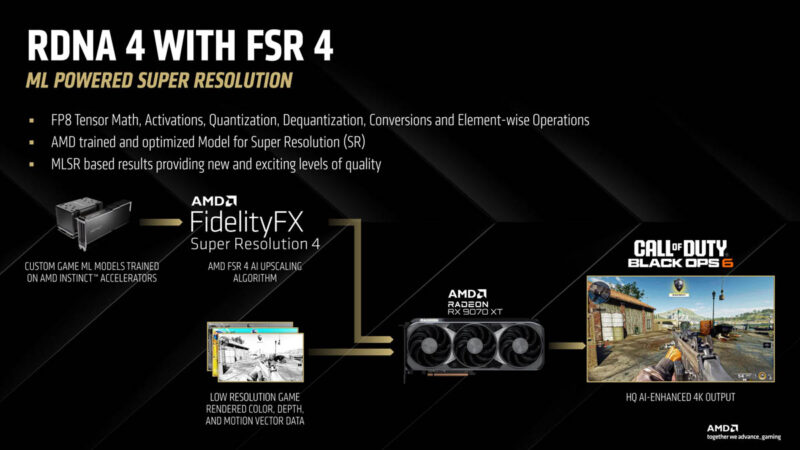
With that upscaling, AMD can get more performance.
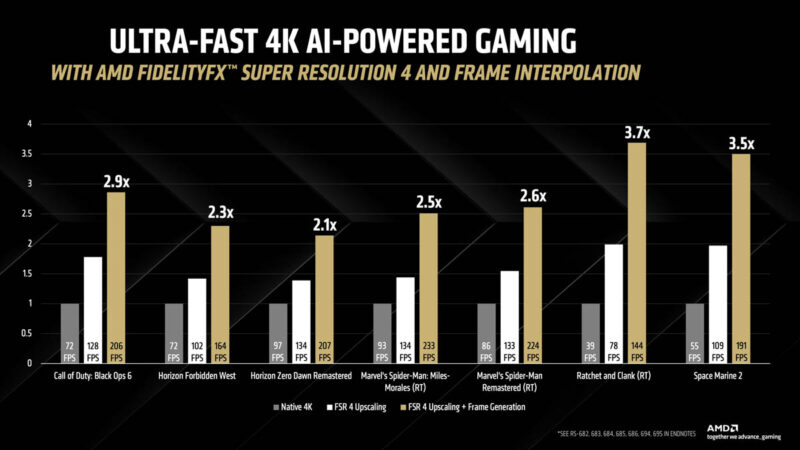
This actually might be a bit less exciting for the higher-end gaming GPUs, but you certainly feel it when these architectures hit iGPUs.
Final Words
RDNA 4 is an exciting one for two reasons. First, it is a nice generational leap for AMD’s GPUs. Second, it is important for AMD to do well to keep some pressure on NVIDIA. NVIDIA, of course, has a massive data center GPU business that is making its consumer business look tiny in comparison. We shall see how the new architectures play out in the market.




